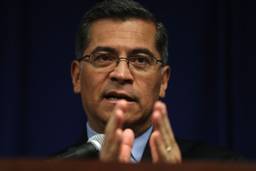How the DCCC’s “Blacklist” Could Blow Up in the Democratic Establishment’s Face
The attacks on the party’s left flank might be backfiring. Just look at Marie Newman’s primary challenge to Dan Lipinski.
Natalie Shure

In April, two weeks after announcing her primary campaign rematch against Rep. Dan Lipinski (D-Ill.), Marie Newman was blindsided. The leadership of the Democratic Congressional Campaign Committee (DCCC) had issued a directive that effectively put vendors who work with candidates challenging incumbents on a blacklist. Any consultant, polling firm, communications strategist or field operative that helped insurgent challengers would be ineligible for future work with the DCCC — practically forcing them to steer clear of Newman if they ever wanted a congressional campaign job again.
“It was onerous,” Newman recalled at her campaign office in Countryside, a Southwest Chicago suburb known for its strip malls and fast-food franchises. “It was very expensive and we lost a lot of work. We had to throw out a lot of it and start over.” Four campaign service providers were elbowed out, leaving Newman scrambling to replace them. “We’re up and over and beyond it, largely out of sheer grit.” (The $45,000 her campaign reportedly raised from angry small donors off the incident couldn’t have hurt, either. In the most recent fundraising period, her campaign reports raising a staggering $350,000.)
Complicating matters was the fact that Lipinski is one of the most conservative Democrats in Congress, with Newman running a progressive challenge from the left. If battles between establishment Democrats and lefty upstarts have grown familiar in the wake of the 2016 Democratic primary contest between Bernie Sanders and Hillary Clinton, this race doesn’t exactly fit that mold. While Newman is endorsed by Sanders and is running on a platform of Medicare for All, the Green New Deal and a $15-dollar minimum wage, in other ways she’s more closely aligned with the so-called establishment than her opponent. Lipinski’s staunch opposition to abortion rights — he’s been a featured speaker at the March for Life and has a 75% pro-life rating from National Right to Life — as well as his lack of support for LGBTQ issues, put him out of step with the mainstream of his party. Newman, meanwhile, boasts the support of groups such as “establishment” pillars EMILY’s List and Planned Parenthood.
After losing to Lipinski in 2018 by just over 2%, Newman could be poised for an upset: Lipinski’s conservative stances on abortion and immigration have received considerable negative attention, and Newman has spent the past year campaigning with local officials throughout her district. As the Chicago Sun-Times noted, Newman is also out-fundraising Lipinski and could well benefit from higher turnout of infrequent voters in a presidential election year.
Now that Newman has replaced her staff, she’s months into a high-stakes fight against an eight-term incumbent whose last name is practically synonymous with the Chicago machine. Whether or not she pulls out a victory will serve as a barometer not only for the momentum behind the Democratic Party’s ascendant left flank, but for just how much the party establishment will stand in its way.
Lipinski: Machine Democrat
Lipinski’s right-leaning positions are also out of step with his constituents. [The 3rd District, which includes Southwest Chicago and the surrounding suburbs, picked Clinton over Trump by 15% in 2016, and went for Sanders over Clinton by nine points in the primary. The district is such a blue stronghold that the Republican Party traditionally doesn’t even bother to run a candidate, which left an opening in 2018 for outspoken neo-Nazi Arthur Jones to glide through an uncontested primary and clinch the GOP’s ballot line, before losing to Lipinski in the general election by over 50%.
So why would voters in such a diehard Democratic district choose a candidate like Lipinski to begin with? The answer is simple: they didn’t. In 1975, William “Bill” Lipinski, Dan’s father, was appointed Committeeman for the Democratic Party of his ward, a position he retained even after being elected to Congress in 1982. After serving 11 terms, the elder Lipinski won his primary in 2004 before abruptly announcing his retirement, leaving the appointment of a successor up to himself, in his capacity as the Democratic Committeeman. Dan was handed the seat by his father, which led him to move back to Illinois from Tennessee.
It was a classic machine coronation, or as Newman put it, “as slimy as it comes.” Krista Grimm, a LaGrange Park PTA mom and League of Women Voters member, was so infuriated by Dan Lipinski sneaking into his father’s seat that she launched a last-minute write-in campaign against him. “I felt very passionately that our democracy is being usurped,” Grimm said at the time. “The voters are not getting a chance to select their candidate. This isn’t the way it’s supposed to work.” She amassed an impressive 5,066 write-in votes, but Lipinski came out on top.
Newman announced her challenge nearly a decade later, as part of a wave of women running for the first time across the country. Newman boasted of her support for reproductive and LGBTQ rights, while Lipinski’s conservative leanings on social issues appeared ill-suited to the moment. As her polling numbers rose, Lipinski’s campaign received a boost from No Labels — a PAC dedicated to supporting centrists, as well as the Susan B. Anthony List, an organization that backs pro-lifers. There’s also reason to believe his campaign stooped to personal attacks: many voters reportedly received texts from No Labels volunteers before the primary suggesting that Newman was a Holocaust denier (she’s not), and her name was even allegedly missing from the ballot in several precincts, one source confirmed to Vox. On March 20, 2018, Newman lost by a hair, with 49% of the vote.
Since announcing in April that she would run again, Newman’s platform and messaging have shifted slightly from 2018. While LGBTQ, immigration and reproductive rights issues are still central to her campaign, she’s also placing more emphasis on her progressive economic stances, such as Medicare for All, the Green New Deal and public transportation development. [(In one recent interview with The Nation, Newman imposed a strict limit of one question about abortion, insisting she didn’t want it to dominate her campaign at the expense of her agenda’s other planks.) She’s received endorsements from national progressive figures including Sanders, Sen. Elizabeth Warren (D-MA) and Rep. Alexandria Ocasio-Cortez (D-N.Y.).
Lipinski, meanwhile, still holds the job he just barely kept last year, owing largely to his deep dynastic ties with local politics. The fabled “Chicago machine” traces its origins back to 1871, when politicians struck a deal with business owners and saloon keepers to protect their interests in exchange for money and turning out their networks to vote, explained Dick Simpson, a political science professor at the University of Illinois at Chicago. For much of the 20th Century, as WBEZ reports, that amounted to a well-oiled patronage system: ward committeemen like Lipinski’s father doled out civil service jobs to grease up “Get Out the Vote” operations, which incentivized aspirants to round up their neighbors, fellow churchgoers and union members to pick their slate of candidates. It was a system designed to engineer political loyalty in sometimes nefarious ways, including notorious schemes involving long-dead or paid-off voters.
Since Bill Lipinski got his start under Mayor Richard J. Daley in the 1970s, the machine has been significantly weakened by court cases and federal oversight. But according to Simpson, it still isn’t dead — while there were some 20−35,000 machine-tied civil servants doubling as precinct workers in the 1970s, he estimated there are probably closer to 5,000 today. It was in those city wards with strong machine roots that Lipinski outperformed Newman by the highest margins.
But Simpson noted that there are crucial differences between Lipinskis Sr. and Jr. While Bill maintained an active role in the local Democratic Party infrastructure during his time in Congress by continuing to work as his ward’s committeeman, Dan has not — which means that a third generation won’t inherit a family congressional seat. As a result, should Newman win, she could step in and use her role to support down-ballot allies. “If Lipinski loses, that would give a base in local politics for more progressive candidates to win at the local level,” Simpson said. “Newman could actively support other candidates running who are similar to her. A lot of Marie Newmans winning across the country could shift the entire Democratic Party.”
A new kind of party?
Such an outcome depends on just how willing the Democratic Party is to change. There’s certainly historical precedent: if the two major U.S. parties have held firm since the mid-19th Century, their composition and political orientation has repeatedly shifted. Since the 1980s, as Republicans lurched ever further to the right, the Democratic Party increasingly pivoted toward the concerns of the educated professional class, embracing corporate money while distancing itself from labor and championing deregulation and trade deals at odds with the interests of the working class.
Since Donald Trump’s election in 2016, however, a tide of progressive energy has helped push the Democratic Party to embrace more progressive stances on issues ranging from healthcare to immigration and the climate. Moving that energy into the halls of power, however, has largely depended on competitive primaries. While progressive freshman Reps. Ilhan Omar (D-MN) and Rashida Tlaib (D-MI) ran in open seats, Ocasio-Cortez and Ayanna Pressley (D-Mass.) both unseated incumbent Democrats in 2018. Marie Newman and several other candidates are hoping to do the same next cycle. Like the others, Newman has been endorsed by Justice Democrats, an organization founded by several Sanders organizers in 2016 that embraces the strategy of primarying Democrats already serving in safely blue districts. This confrontational approach puts Justice Democrats, and the candidates it endorses, in an adversarial position relative to the Democratic establishment, a tension escalated by the DCCC “blacklist.”
“We offer a lot of the same services the DCCC provides their candidates — communications support, field support, texting, phone-banking, activating a small donor network and all that kind of stuff that’s traditional for more establishment candidates,” said Waleed Shahid, Communications Director at Justice Democrats, which has also cultivated a database of vendors willing to work on primaries despite the DCCC’s ban.
“They kind of shot themselves in the foot. You had new, compelling candidates getting more people involved who want primary challenges like AOC and Ayanna, and then they come out with a policy that’s basically like ‘No more AOCs or Ayannas.’ It really galvanized progressives,” he said. Case in point: Cheri Bustos, the chair of the DCCC, headlined a fundraiser for Dan Lipinski just as the GOP was passing near-total abortion bans in several states. Bustos canceled additional events in the face of intense blowback. Young Democrats of America at over 70 colleges even called for a boycott in donations over the “blacklist” policy. While Young Democrats chapters have not endorsed any specific candidates, Hank Sparks, the chairperson of Harvard’s chapter, recognizes the broader political role that primarying incumbents has played. “We think that primary challengers have brought to bear issues like climate change in a really important way,” Sparks said. “We want the Democratic Party to succeed, and our efforts with the DCCC come from that point of view…we definitely think primaries are a healthy part of the Party.”
Newman appears to agree. While she’s frustrated with the DCCC and Lipinski, she doesn’t share Justice Democrats’ analysis that the Party needs a complete overhaul. “There are probably ten wings of the Democratic Party,” she said. “We are a mosaic of independent thinkers, and that’s what I like…I don’t think there’s a left wing and a right wing.” Ironically, that opinion suggests that one of the highest-profile insurgent challengers in the country sees the role of primaries more narrowly than some of her backers. “I think it’s always good to have new blood in the system, but I don’t think everyone should be primaried just to be primaried,” she said.
Critics of the strategy point to the expenditure of limited resources on seats that are already held by Democrats, which could be better spent on flipping seats. This is essentially the DCCC position, as well as that of Congressional Progressive Caucus Chair Pramila Jayapal, who earlier this year became the lead co-sponsor of Medicare for All legislation in the House — a top demand of many left challengers. “If there are progressive candidates who emerge in districts, a sitting Congress member who’s doing a good job shouldn’t be worried,” Jayapal told Politico. “I am expending zero energy in trying to recruit other candidates to run against Democrats.” For his part, Lipinski himself seems to regard the forces against him as part of an overarching political project, telling the Chicago Tribune he’d like “to bring the party back to the center, because if both sides keep going the way they’re going, we won’t have a country.”
However one regards primaries as a broader strategy, there’s evidence that the looming specter of them is already shaping the Democratic Party: “I was told by a number of people on the hill that the reason so many people signed onto the Green New Deal is that they were afraid of getting primaried over it,” Shahid told me.
As Alexandra Rojas, Executive Director of Justice Democrats tells it, remaking the Democratic Party isn’t an end in itself — it’s a mechanism for building power to implement broad political change. “We’re not just in this to unseat bad folks like Dan Lipinski, we want to replace them with champions of Medicare for All and the Green New Deal, and get there by refusing corporate PAC and lobbyist money.”
The problem, of course, is that’s easier said than done. If the heyday of old-style machine politics is mostly behind us, the impulse toward self-preservation inherent to political parties is not. That’s often what people mean when they talk about “the establishment” — the professional networks, campaigning and financing infrastructure that reproduce political outcomes that best facilitate their own survival. The campaign “blacklist” was an attempt to keep those circuits closed. It’s no fluke either — the DCCC’s Senate counterpart has reportedly enacted an even stronger blacklist of its own, working on behalf of not only incumbents, but establishment favorites. It’s easy to conclude that breaking this feedback loop demands confrontational primaries by definition. It’s also easy to imagine that makes it tougher to work within the Party — two former Justice Democrats staffers, Saikat Chakrabarti and Corbin Trent, recently left Ocasio-Cortez’s congressional staff after rumors of serious pressure to oust them. In other words, the same structural forces that protect incumbents remain challenging for outsiders to navigate even after they’ve won. “We are focused on doing what needs to be done in this moment,” Rojas said. “We have ten years to radically transform our economy and society, and center racial and economic justice to stop climate catastrophe and save the planet. [We need to be solving] these deep structural problems with our democracy and our society, and it isn’t going to be this same leadership that gets us out of it.”
For Simpson, the outcome of the IL-3 race will shed light on just how viable this project is. “We’re going to see if there really is a broad movement, like the Progressives of the early 20th Century,” he said. “There are broad trends at work, having to do not only with what party faction is dominant, but about whether democracy itself can be saved. All of the interweave in a complex quilt-like pattern that we’re not going to understand fully at least until the 2020 election is over.”
That means Newman must do the same thing the once-mighty Chicago machine was designed to: turn people out. Just after I met her, Newman set off for her 137th meet and greet in a kitchy Palos Park ranch house. By her campaign’s count, she has recruited some 2,000 volunteers so far, compared to 800 in 2018. “It’s like an army,” she told me. “If we bring an army out, where is he going to go? Who will he get to be with him?”








